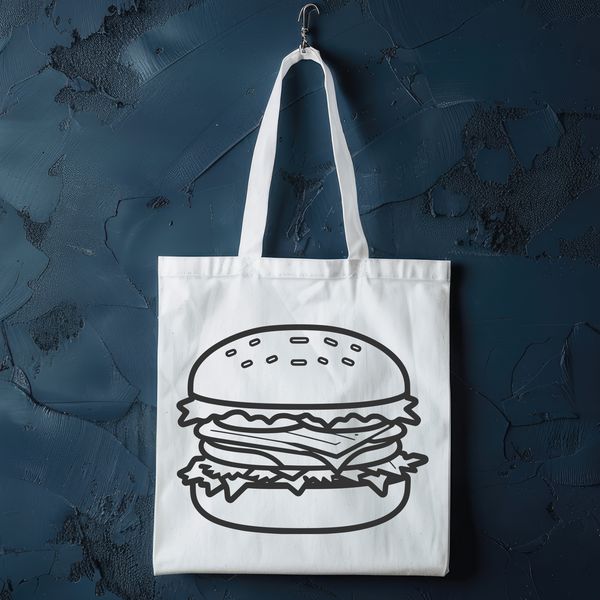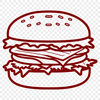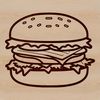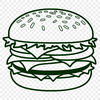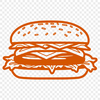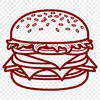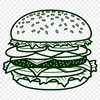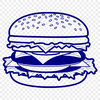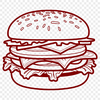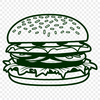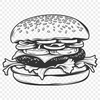This hamburger design has been crafted with precision to ensure that it can be easily cut out and used for a variety of applications. The detailed lines and curves make it perfect for cutting machines like Cricut, as well as laser cutters.
A cheeseburger is more than just a meal - it's an experience. This design captures the essence of a classic burger, from the patty to the toppings. You can use this svg file in conjunction with other food designs to create a cohesive and mouth-watering visual display.
When working with cutting machines or laser engravers, make sure to adjust your settings according to the material you're using. This will ensure that your hamburger turns out sharp and detailed. Experiment with different materials to achieve unique textures and effects.
A fun fact about hamburgers is that they originated in Germany as a way to use up leftover ground meat. The first American-style hamburger was served at the 1904 World's Fair in St. Louis, Missouri.
You can use this design for personal or commercial purposes - just be sure to check your local laws and regulations regarding intellectual property. Some possible uses include DIY invitations, signs, decals, and web design elements like thumbnails and icons.
For a more creative project, try combining this hamburger with other food designs to create a fun and playful scene. You could use it as a template for pyrography or pyrogravure projects, adding intricate details and shading to bring the burger to life.
This vector design is highly versatile and can be scaled up or down without losing any detail. It's perfect for commercial use in restaurants, cafes, and food trucks - just be sure to adjust the size according to your needs. You could also use it as a logo or branding element for a business related to food or cooking.
To get the best results when cutting out this design, make sure to mirror it (if necessary) and adjust your settings accordingly. Experiment with different materials and techniques to achieve unique effects - like adding texture or color with pyrography or laser engraving.
If you're new to working with cutting machines or vector art, don't worry! This design is easy to use and requires minimal expertise. Simply download the svg file and import it into your chosen software (like Illustrator or Procreate) for a seamless experience.
This hamburger design has been carefully crafted with attention to detail and precision. Whether you're using it for personal or commercial purposes, you'll appreciate its versatility and ease of use.
